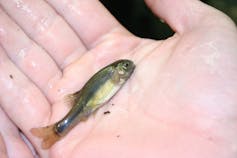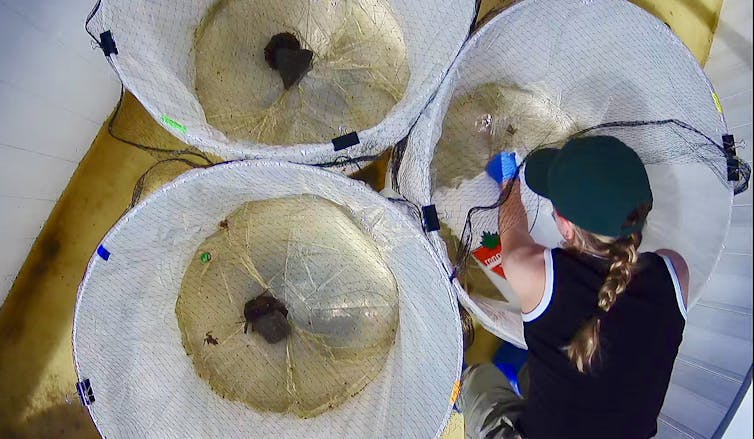Three months ago, 5.3 million litres of industrial wastewater was reported to have overflowed from an Imperial Oil storage pond into a muskeg and forested area. This industrial wastewater could have filled more than two Olympic-sized swimming pools, and is now one of the largest known spills of its kind in Alberta’s history.
Then came news of a separate incident where an unknown amount of industrial wastewater has been leaking from an Imperial Oil tailings pond for the last 12 months. The leakage flows underground and then resurfaces to contaminate surface waters outside the Kearl Oil Sands Processing Plant and Mine.
These waters flow into the Athabasca River, which is part of an important waterway that supports communities in Alberta and the Northwest Territories. In addition to its significance to the Indigenous communities here, this waterway also provides crucial habitats for endangered wildlife species.
While Imperial Oil and Alberta’s energy regulator have reported no impacts on wildlife or waterways yet, the federal government believes the leaking waste is harmful to aquatic life, and has ordered Imperial Oil to take immediate action in preventing any further seepage of toxic water.
Scientists, including our group at Queen’s University, have been studying the chemicals in oilsand tailings ponds for decades to better understand their dangers and to protect wildlife from their effects.
Fish struggle to survive in contaminated waters
The mining and extraction of bitumen — a heavy crude oil with the consistency of cold molasses — produces industrial wastewater with high concentrations of several dangerous components, including salts, dissolved organic compounds and heavy metals like cadmium and lead.

Research and real-world incidents have found that oilsands wastewater is toxic to wildlife including mammals, fish, frogs and birds.
A group of organic compounds, referred to as naphthenic acids, are responsible for most of the toxicity of wastewater. These compounds exist naturally in the region, but accumulate to harmful, unnatural levels in wastewater during the mining process. Despite this, environmental guidelines for “safe” naphthenic acid concentrations do not exist.
The concentrations of these acids in wastewater are studied to determine the extent of the threats to wildlife, and in particular to aquatic species, as their habitats are extremely susceptible to accumulating harmful pollutants.
Studies have found that fathead minnow, walleye and yellow perch experience increased mortality, physical deformities and reduced growth when exposed to naphthenic acids. These are all species commonly found in the oilsands region.

In one investigation, these chemicals altered hormone levels and reduced spawning success in fish. This effect could have population-level consequences in the wild. Meanwhile, in another study, the fish showed reduced survival and abnormal swimming behaviours, even after being held in clean lake water for one month following a week-long exposure to sublethal levels of naphthenic acids.
The science clearly suggests that fish are negatively impacted by wastewater contaminants and even short-term contact can have lasting effects on animals in the affected area.
Canada’s declining amphibians face new threats
Amphibians are one of the most rapidly disappearing groups of animals in Canada, as their wetland habitats often face the threat of pollution, among other stressors. Research on wood frogs and Northern leopard frogs has raised numerous concerns.
Like with fish, studies have found that exposure to wastewater and naphthenic acids can interfere with sexual development and impair breeding in adult frogs. Tadpoles exposed to these chemicals are more likely to die, behave abnormally when escaping predators and are less likely to develop into frogs.
One of our studies found that exposure to these chemicals can also cause developing frogs to develop striking malformations, including kinked spines and missing toes.

Science suggests that if pollutants reach dangerous levels due to spills, it could impair the survival and health of aquatic wildlife in affected areas. Over time, these impacts could cause wildlife population declines and even local species extinctions. Long-term monitoring will be crucial to determine the full impact of these spills.
A need for transparent oilsands waste management
In addition to wildlife, industrial activities in the oilsands region have affected the Indigenous communities over the years as well.
Indigenous Nations located downstream of recent oil spills in Alberta — including the Athabasca Chipewyan First Nation and Mikisew Cree First Nation — voiced their concern over this pollution and its impact on the plants and animals they harvest for food.
While these communities rely on the lands and waters near the spill, they were only notified of the contamination when the provincial regulator issued an environmental protection order in February.
The lack of transparency and delayed responses surrounding these current spills raises questions about how many undocumented incidents could be taking place every year.
In April, while Alberta continued to deal with the aftermath of these incidents, another 6 million litres of water spilled from a Suncor settling pond into the Athabasca River. The current method of managing wastewater is neither safe nor sustainable.
Change is needed to ensure that economic activities do not jeopardize the environment further. As government, industry and Indigenous partners begin the process of building new management and monitoring plans, which will likely include guidelines for treating and releasing oilsands wastewater back into waterways, it is important that the science is not forgotten.
Evidence-informed policies, built on what we know about the toxic extent of wastewater, have the potential to make accidental spills, and the environmental and social injustices they perpetuate, a thing of the past.
Diane Orihel received funding from Environment and Climate Change Canada for her lab's research on the effects of oilsands contaminants on aquatic biota.
Chloe Robinson received funding from Queen's University (Craigie Fellowship), and the Government of Ontario (Ontario Graduate Scholarship).
Chris K. Elvidge is affiliated with the Fish Ecology and Conservation Physiology Laboratory at Carleton University.
This article was originally published on The Conversation. Read the original article.







